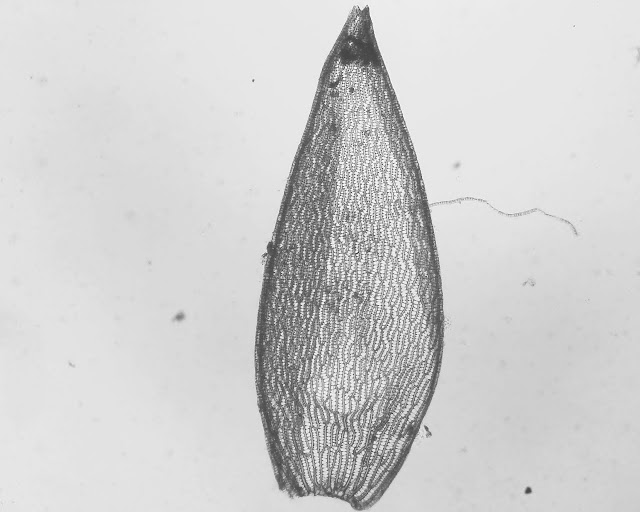Last year, just before the pandemic began in earnest in the UK, I bought a dissecting stereo microscope (it was my birthday present from M). I went for the SX10D from Brunel Microscopes which has an built-in camera and x10, x20 and x40 magnification. I had read that dissecting moss leaves was much easier using a stereomicroscope and now I wonder how I ever coped without it.
One of the attractions of the SX10 was that Brunel were selling a travel case and so when I ordered it I also ordered a case. However, the case was out of stock and between the pandemic slowing imports from China and the general slow-down in shipping in the UK I still don't have the case some 15 months later. I should make it clear that I don't in any way blame Brunel for this - I really recommend them for microscopy supplies in the UK and I bought another microscope from them this year (though that's a whole other story).
With the summer holidays fast approaching I long to be able to take my 'scope with me so that I can look more promptly at the mosses I collect and (I hope) be able to get back out and practise spotting and naming them. Time to build my own case!
As a first step I looked at making a traditional flight case (plywood with protective metal trims). Whilst this was an attractive project, my workshop facilities are a bit limited, so I decided to go for a Really Useful Box fitted out with foam. When shopping for foam I discovered shadow foam 😀.
I purchased a 19L Really Useful Box from a local supplier and some 5cm deep shadow foam (black and green) from Amazon. The first step was to cut a suitable rectangle from the foam sheet that would fit snuggly in the bottom of the box. The shadow foam can be cut with a sharp utility knife and is very easy to work with.
The next step was to place the microscope onto the foam and cut around it with the knife. The shape could then be peeled out.

I cut and peeled a second layer at the base and at the top, to get a tighter, deeper fit, leaving the middle section at the first cut height to support the arm and focus knobs.
This felt pretty snug without any further adjustment and left at least 2cm of foam in place underneath. After checking the fit with the dust cover I then began to cut out other portions around the edge to fit accessories.
I made space to secure the power cord, the USB cable (links the camera to a PC), as well as the removable base and a petri dish to hold specimens.
Unfortunately I cut the petri dish space a little close to the edge, and the top surface of the foam split to the edge. However, once fitted into the box, this wasn't a problem.
I was able to fit all equipment into the box and leave a clear 2 cm at the top to allow for deformation of the lid under load.
For extra stability I used an offcut of the foam (split horizontally) to wedge the base, and there was even room for Watson's flora in the side. I wondered if perhaps I should have left space for Smith's flora, but that would really be overkill for taking on holiday, I think. Anything needing that level of checking can wait until I get home.
Overall, I'm really pleased with the finished case. I will have to pack dissection tools separately, but the total cost here was just a little less than I had expected to pay for the case and the foam was so easy to work with that I managed to complete the whole thing between putting T to bed and supper being ready. The only "problem" is that I now have two and half large sheets of green and black shadow foam left over. But I'm sure they'll find a use.





















